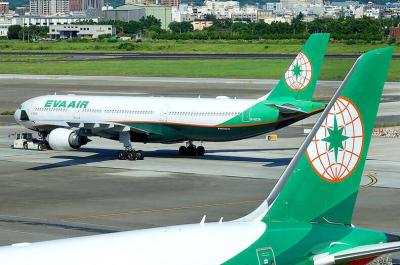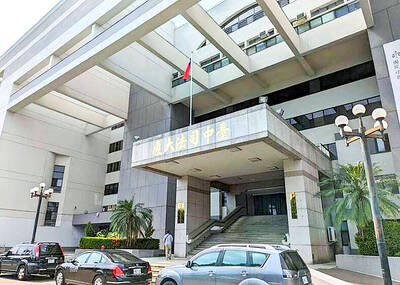When President Chen Shui-bian (
Gradually phasing out nuclear power generation is the main idea behind implementing the Cabinet's Nuclear-free Homeland Project. By the end of 2001, the power-generation capacity of nuclear power plants accounted for 14.5 percent of Taiwan's total power-generation capacity.
However, existing goals and measures set by the Cabinet to seek alternative sources of electricity to fill the void after the nuclear power plants are decommissioned, imply that it could be a long and winding road to a nuclear-free dreamland.
The Cabinet's "Challenging 2008" program, a six-year plan to turn Taiwan into a regional economic and technological powerhouse, includes projects to build solar cities, wind farms and geothermal parks to promote renewable energy.
Early this year, the Cabinet vowed to have about 12 percent of the installed power supply capacity, amounting to about 6,500 megawatt, from renewable sources by 2020. Currently, renewable energy contributes only 4.1 percent to the country's power resources.
To triple the power generation capacity of renewable energy sources looks ambitious. However, conversion of the ambition into the percentage of total energy supply suggests that Taiwan has fallen far behind the global trend.
"Power generation is only part of energy consumption. If we see the promotion of renewable energy from the perspective of total energy supply, Taiwan's resolution remains insufficient," said Wang To-far (王塗發), one of convenors of the Clean Energy Promotion Group under the Cabinet's Nuclear-Free Homeland Commission.
According to the Energy Commission under the Ministry of Economic Affairs, when renewable energy is responsible for 12 percent of the country's power generation capacity, it will account for only 5 percent of the total energy supply.
Last year, a proposal that renewable energy accounts for up to 15 percent of global energy supply by 2010 was brought up at the UN World Summit on Sustainable Development (WSSD) held in Johannesburg, South Africa.
"We have to push forward our target set for the year 2020 to about 2010 in order to prove Taiwan's resolution to adopt clean energy," said Wang, a professor of economics at the National Taipei University who participated in the summit.
Officials of the Energy Commission, however, said consensus was not reached on the global proposal presented at the summit.
Wang Yunn-ming (
He said that for those countries with abundant sources of renewable energy, such as hydraulic power, 15 percent or even 20 percent could be a reachable goal.
"However, it does not apply to Taiwan, which lacks sources of renewable energy," Wang said.
Wang said that having renewable energy contribute 12 percent of the country's power generation capacity by 2020 was an acceptable goal for Taiwanese energy experts.
"When promoting sustainable development, we need to avoid causing negative impact on the economy and society," Wang said.
At the present, Taiwan relies mainly on thermal power generation for its power supply. In 2001, low-cost fuel, such as coal, provided 37.8 percent of the country's gross power generation.
Oil and gas accounted for 11.2 percent and 10.2 percent respectively.
At the Nuclear-Free Homeland Conference held last Friday in Taipei, topics ranging from how to actively increase energy efficiency, how to promote a free-market principle in the power industry and how to advocate the use of clean energy were discussed.
President Chen, whose economic policies have been criticized, now sees the shifting of the industrial base to a lower energy-intensive mode of production to increase the nation's overall energy efficiency as a good way of reviving the economy.
In Chen's opening speech at the conference, he said that energy-intensive industries account for more than 30 percent of all domestic energy consumption.
These industries, however, contribute only 5 percent to the nation's GDP.
Wang To-far said this scenario made it a challenge to promote renewable energy. For example, making laws take time.
Energy-related laws under review in the legislature include the proposed subsidy regulations for developing renewable energy and the energy conservation law.
Key factors considered in the new laws include well-designed regulations on compulsory purchases and guarantees of fixed prices for electricity converted from renewable energy sources, with prices varying depending on the source of renewable energy.
In addition, Wang To-far said, investors are facing diverse problems, such as land requisition, which involve too many Cabinet agencies.
"If clean energy investors need to face diverse agencies ranging from the Ministry of National Defense to the Council of Agriculture, how can we make things run smoothly?" he said., pointing out the urgency of establishing a Cabinet-level taskforce in charge of overall planning to promote renewable energy.

The first global hotel Keys Selection by the Michelin Guide includes four hotels in Taiwan, Michelin announced yesterday. All four received the “Michelin One Key,” indicating guests are to experience a “very special stay” at any of the locations as the establishments are “a true gem with personality. Service always goes the extra mile, and the hotel provides much more than others in its price range.” Of the four hotels, three are located in Taipei and one in Taichung. In Taipei, the One Key accolades were awarded to the Capella Taipei, Kimpton Da An Taipei and Mandarin Oriental Taipei. Capella Taipei was described by

EVA Airways today confirmed the death of a flight attendant on Saturday upon their return to Taiwan and said an internal investigation has been launched, as criticism mounted over a social media post accusing the airline of failing to offer sufficient employee protections. According to the post, the flight attendant complained of feeling sick on board a flight, but was unable to take sick leave or access medical care. The crew member allegedly did not receive assistance from the chief purser, who failed to heed their requests for medical attention or call an ambulance once the flight landed, the post said. As sick

The Taichung District Court yesterday confirmed its final ruling that the marriage between teenage heir Lai (賴) and a man surnamed Hsia (夏) was legally invalid, preventing Hsia from inheriting Lai’s NT$500 million (US$16.37 million) estate. The court confirmed that Hsia chose not to appeal the civil judgement after the court handed down its ruling in June, making the decision final. In the June ruling, the court said that Lai, 18, and Hsia, 26, showed “no mutual admiration before the marriage” and that their interactions were “distant and unfamiliar.” The judge concluded that the couple lacked the “true intention of

A drunk woman was sexually assaulted inside a crowded concourse of Taipei Railway Station on Thursday last week before a foreign tourist notified police, leading to calls for better education on bystander intervention and review of security infrastructure. The man, surnamed Chiu (邱), was taken into custody on charges of sexual assault, taking advantage of the woman’s condition and public indecency. Police discovered that Chiu was a fugitive with prior convictions for vehicle theft. He has been taken into custody and is to complete his unserved six-month sentence, police said. On Thursday last week, Chiu was seen wearing a white